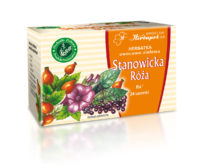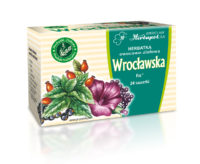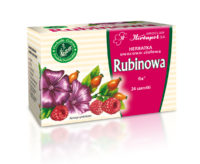Hibiscus sabdariffa
Roselle (Hibiscus) is an annual plant belonging to the mallow family (Malvaceae) found in North and Central Africa and Western India. It probably comes from Angola. It is currently cultivated in many tropical countries, mainly in Sudan, Egypt, Thailand, Mexico and China. It is cultivated as an ornamental plant, as well as for food and medicinal purposes. Dried flower cups (Hibisci flos) are the pharmacopoeial raw material obtained from hibiscus.1,2
Large red calyxes are a characteristic feature of hibiscus. It is traditionally believed that infusions obtained from them have a beneficial effect on the functioning of the urinary tract. Usually these flowers are used to prepare refreshing and invigorating, decaffeinated drinks called “carcade”. They are often used as an ingredient of herbal teas for hot or cold drinking, pretty frequently in combination with wild rose or elder. Drinks containing hibiscus flowers have a pleasant, sourish taste.1,2
It is interesting that fresh hibiscus cups are used as vegetables in some countries, dried flowers can be used to produce jams, and its seeds are used to press edible oil from.1
1 H. Strzelecka, J. Kowalski, Encyklopedia zielarstwa i ziołolecznictwa, Wydawnictwo Naukowe PWN, Warszawa 2000, s. 224
2 M. Wichtl, Herbal Drugs and Phytoparmaceuticals, Medpharm GmbH Scientific Publishers, Stuttgart, Germany 2004, s.292-293




